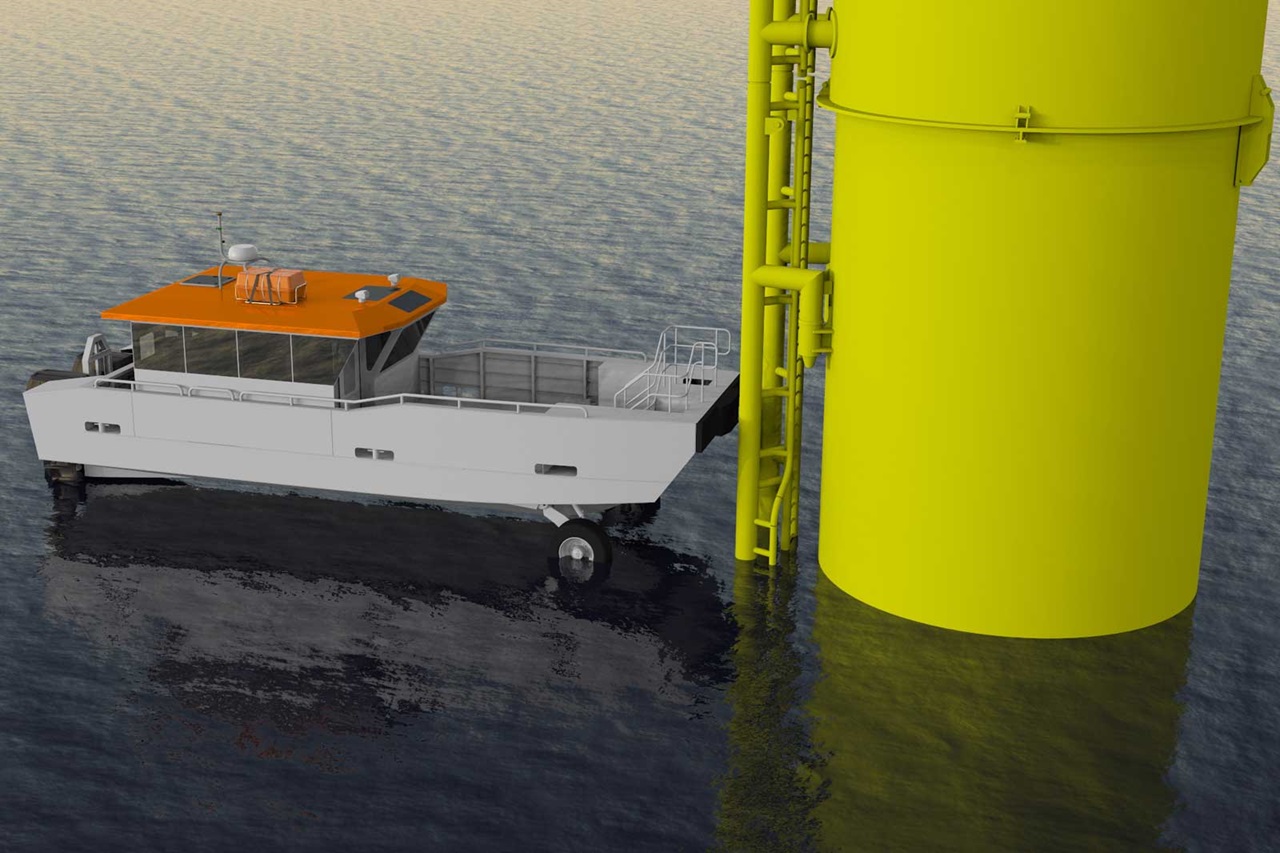In recent years, there has been a focus on servicing deepwater offshore wind farms located far from shore, necessitating the construction and commissioning of larger, more stable CTVs and SOVs. However, accessing some of the smaller wind farms in shallower waters can also be a challenge. Take the 60MW Scroby Sands turbine array, located 2.5km off the coast of East Anglia, UK: the farm is built on a prehistoric sandbank. Centuries of coastal erosion, along with natural changes in the marine environment, have resulted in the sandbank rising over time, effectively making four of the turbines inaccessible to CTVs during periods of low tide.
To address this, renewable energy company RWE, which administers the Scroby Sands wind farm, came together with its boat operator partner Commercial Rib Charter (CRC) to commission a new type of vessel. The companies had noted a 12m landing craft designed by UK naval architect Chartwell Marine and built by Ireland’s Arklow Marine, and decided that a similar vessel type, albeit equipped with amphibious capabilities, would enable personnel to reach the stranded Scroby Sands turbines.
The forthcoming CTV, CRC Walrus, is being built by Diverse Marine and is scheduled to enter service in September, whereupon it will be operated by CRC under a six-year contract. The newbuild will feature a length of 12.9m (including its outboards), a beam of 4m and an overall depth of 1.65m, and will draw just under 1m. The hull and superstructure are fashioned in aluminium.
The vessel has been designed for 10 turbine technicians and two members of crew, and has a deck cargo capacity of 1tonne. Andy Page, Chartwell Marine MD, explains that a deep-vee hullform was selected for the craft, in preference to the flat-bottomed hull design typical of amphibious craft, as the latter would have proven uncomfortable for personnel at Scroby Sands, where it is common to encounter “Solent-style chop”. The amphibious system comprises two wheels at the front and one at the back, made in galvanised steel. Meanwhile, power is provided by twin OXE Diesel outboards, each rated 224kW, while a Kubota engine will power the hydraulics for the amphibious system.
When at sea, CRC Walrus will be able to achieve speeds of 20-23knots, switching to 6km/hour when on land. Page says that Chartwell is now working on an 18m version of the amphibious craft.






